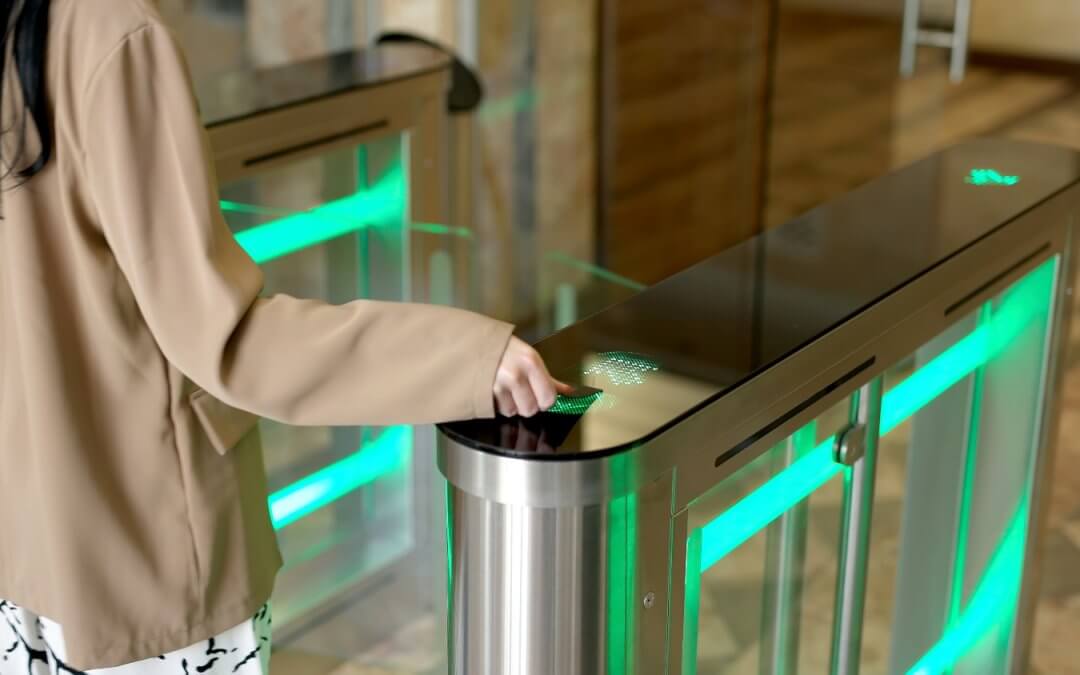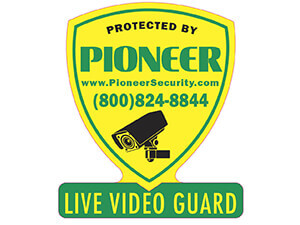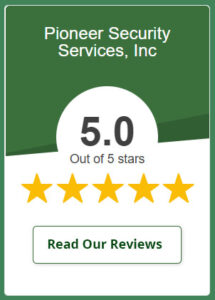According to the ASIS International 2023 Access Control Research Report, 93% of security professionals reported that access control is a vital component of their broader risk management or security plan.
Beyond simply locking doors, these systems provide a more innovative way to protect people, property, and sensitive areas. From small offices to large facilities, access control helps maintain safety, monitor activity, and give managers peace of mind.
In this blog, we’ll explore how access control systems strengthen site security, the different types available, their key benefits, and tips for choosing the right system for your needs.
What Is An Access Control System And How It Protects Your Site
An access control system is a security solution designed to manage who can enter or exit a building, room, or restricted area. Instead of relying on keys that anyone can copy or lose, access control uses technology to give precise permissions to individuals. This technology not only secures entry points but also tracks activity, making it easier to spot unusual behavior and respond quickly to security threats.
The importance of access control is evident: the global market for these systems was valued at $9.5 billion in 2023 and is projected to nearly double by 2032. This clearly reflects how businesses, schools, healthcare facilities, and government buildings increasingly rely on these systems to protect people and assets.
A properly designed access control system limits entry based on job roles, schedules, or clearance levels, which is especially important in workplaces with sensitive equipment or data. It also improves daily operations by allowing centralized control of doors, gates, and other entry points. Managers can grant or revoke access instantly without rekeying locks or distributing new keys.
Access control systems can stand alone or integrate with other security tools like surveillance cameras, alarms verification, and visitor management software. When combined, these solutions give organizations a full view of activity across their property. Whether it’s a single door in a small office or hundreds of entry points in a large facility, an access control system is designed to scale with your needs and strengthen site security at every level.
How Access Control Differs From A Lock And Key
A traditional lock and key setup offers basic protection, but it has many limitations. Keys can easily be copied or lost, and replacing locks is time-consuming and expensive. Locking doors manually also leaves room for human error.
Access control eliminates these problems by replacing keys with credentials like cards, fobs, biometric scans, or smartphone apps. Credentials are assigned to each user and can be updated or removed with a few clicks. This means a former employee, tenant, or contractor can no longer access your site the moment their permissions are revoked.
Unlike keys, access control provides a complete record of entry and exit activity, giving you insight into who was on your property and when. These logs are invaluable for investigations, compliance checks, and identifying security gaps. Access permissions can also be set by time or location, so only the right people can enter high-risk areas during specific hours.
This level of control is nearly impossible with traditional keys, which are either “all or nothing.” In contrast, access control creates a dynamic, customizable security framework.
Typical Hardware And Software Parts Explained
Access control systems are made up of several key hardware and software components that work together to secure your site.
Common hardware includes:
- Readers and keypads: Devices installed at entry points to verify credentials like cards, PIN codes, or biometrics.
- Electronic locks: Hardware that unlocks doors, gates, or cabinets when valid access is granted.
- Controllers: Central devices that communicate with readers and manage permissions.
- Credentials: Cards, fobs, smartphones, or fingerprints used to gain access.
Software components include:
- Management platform: The interface for administrators to add users, change permissions, and view logs.
- Cloud or on-premise servers: Where data, permissions, and activity records are stored.
- Integration tools: Connect the system with video surveillance, alarms, or HR software.
These parts work together to create a seamless security solution. For example, when a user scans a card, the reader sends data to the controller, which checks the database to confirm access. The lock then releases, and the system records the event. This process happens in seconds and provides real-time tracking of every entry point on your property.
The growing adoption of access control is also reflected in industry trends: 56% of security professionals reported increased revenue from access control systems in 2023, showing just how important they are for businesses across all sectors.
Types Of Access Control Systems Available In The Market Today
Here are the main types of access control systems used today, with quick notes on how each works and where they fit best.
Prox and Smart Card Readers Explained
Prox cards read a simple radio signal and are common in offices. Smart cards store data on a chip, enabling them to hold stronger credentials and utilize encryption. Prox is low-cost and easy to install, but smart cards give better protection against cloning. In practice, smart cards work well where sites need higher security and audit detail. Some use cases include multi-tenant buildings and data rooms.
Mobile Credentials and Phone-Based Access
Mobile credentials let people use a smartphone app or digital wallet to open doors. They use Bluetooth, NFC, or QR codes. According to the Security Industry Association, mobile access is becoming increasingly adopted within the security industry, driven primarily by technologies such as NFC, BLE (Bluetooth Low Energy), and UWB (Ultra-Wideband).
This method is fast and contact-free, and admins can issue or revoke access remotely. However, phone loss and BYOD management are risks to manage. Many sites adopt mobile access alongside cards for convenience and backup.
Biometrics: Pros and Cons
Biometrics read fingerprints, face, or iris patterns. The major advantage is that credentials cannot be transferred between individuals. On the other hand, privacy rules, hygiene, and false rejects can cause user friction. For best results, combine biometrics with another factor like a card or PIN to balance security and user comfort.
Cloud-Based vs. On-Premise Deployments
Cloud systems give remote management, automatic updates, and easier scaling across sites. On-premises keeps data local and works well in areas with limited internet. A hybrid model is standard: cloud for daily ops and local controllers for critical, offline doors.
Mechanical and Offline Fallback Options
Mechanical locks, battery-powered readers, and offline controllers act as backups when electronics fail. These options let doors stay secure during power or network outages. Plan for regular battery checks and a clear override policy, so access stays safe at all times.
Physical Security Benefits Of Access Control For Sites
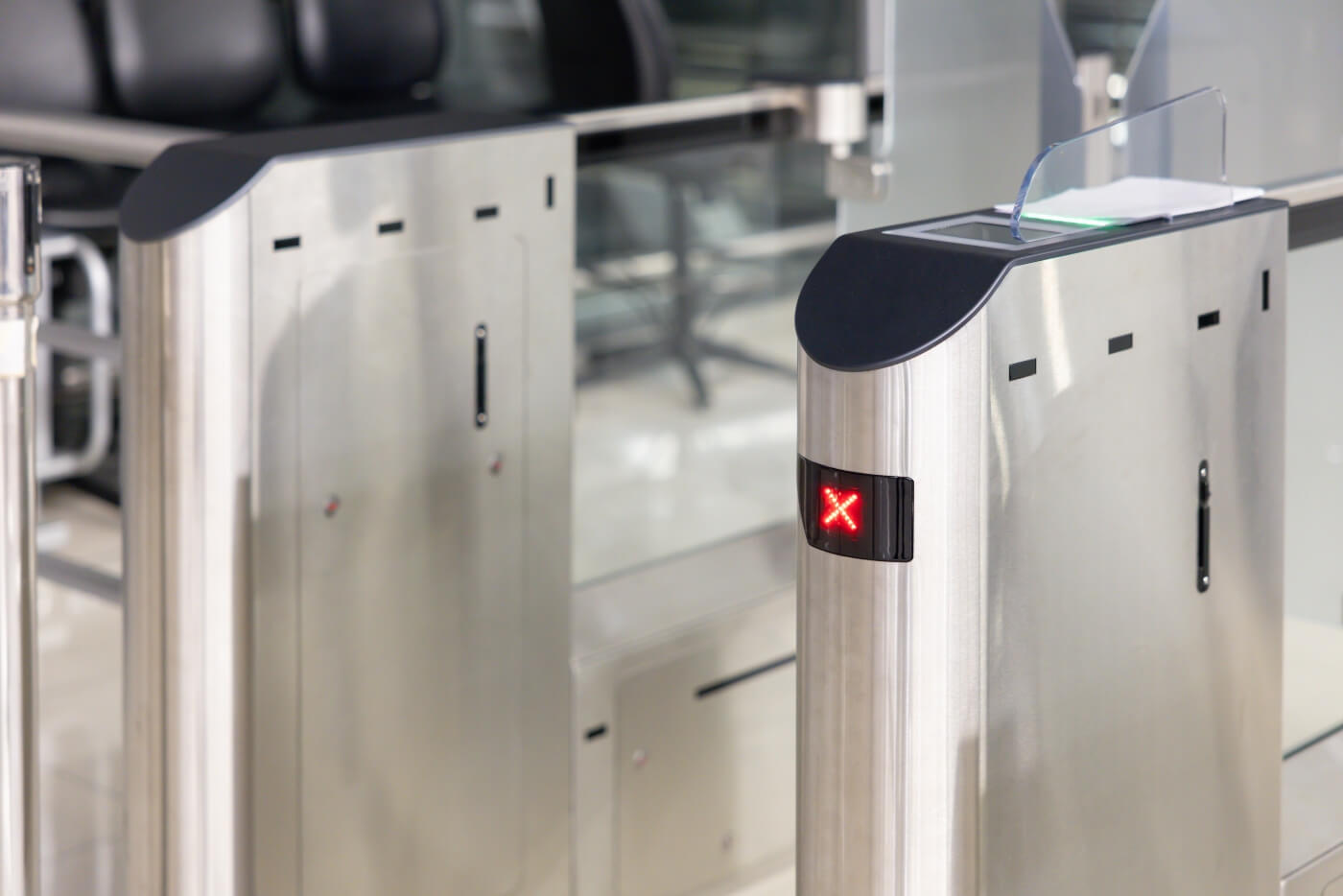
Access control systems do more than lock doors. They shape how people move across a site, protect key assets, and create clear records of activity. Below are the main physical benefits that make sites safer and easier to manage.
Controlled Entry and Secure Zone Creation
Access control lets you build clear zones inside a site. For example, general staff can access common areas, while only authorized personnel are allowed to enter server rooms or labs. You can set access by role and by time, so cleaners do not join at night. This level of control lowers risk and helps managers limit who sees sensitive equipment and data.
Reducing Tailgating and Unauthorized Entry
Tailgating happens when one person follows another through a door. Modern systems cut that risk with reader sequencing, turnstiles, and door sensors tied to alarms. Video analytics can spot two people passing on one badge read and send an alert. In short, access control makes it harder for strangers to slip in and gives staff tools to act fast.
Protecting High-Risk Areas and Valuable Assets
High-risk spaces need more than a lock. Layered access, two-factor checks, and strict logging keep these areas safer. If someone tries to open a cabinet or room without permission, the system logs the attempt and can trigger an alarm. This helps stop theft and prevents costly downtime for critical systems.
Visitor and Vendor Access Workflows
A strong access control system makes visitor and vendor management simple and secure. You can pre-register guests so their badges or mobile passes are ready before they arrive, cutting wait times at reception. Temporary credentials can be set to expire automatically, reducing the risk of forgotten or misused passes.
Vendors and contractors can be restricted to approved areas, and their activity is fully logged for accountability. For highly sensitive zones, requiring escorts adds an extra layer of security. These workflows keep operations efficient while protecting staff, equipment, and confidential areas.
Operational Advantages For Site Managers And Security Teams
Access control is more than a security measure. It makes life easier for those managing busy buildings. Here is how it simplifies daily work and strengthens site oversight.
Centralized User Provisioning and Deprovisioning
With access control, managers can control permissions for every user from one platform. Adding a new employee or contractor takes only a few clicks, and removing access is just as fast. This prevents security gaps caused by lost keys or delayed lock changes. Centralization also helps large sites maintain consistency across multiple doors and locations, reducing errors and saving staff time.
Scheduled Access, Remote Lock and Unlock
Schedules can be set so employees only have access during their shifts. This prevents after-hours entry without requiring staff to monitor every door. Remote controls add another layer of convenience. Managers can lock or unlock doors from anywhere, whether they are responding to an emergency or allowing access for cleaning crews.
Automated Visitor Handling and Temporary Credentials
Instead of handing out physical keys, site managers can create temporary credentials for visitors, contractors, or vendors. These credentials expire automatically, reducing security risks. Many systems also integrate with visitor kiosks or apps, streamlining check-ins and keeping records of every guest without manual paperwork.
Integration With HR and Time-And-Attendance Systems
Modern access control software can sync with HR platforms to automatically update employee records. If someone leaves the company, their access is removed instantly. Time-and-attendance integrations also allow doors to act as time clocks, reducing payroll errors and giving managers accurate data on staffing patterns.
How Audit Trails and Alerts Strengthen Security and Speed Investigations
Audit trails and alerts turn messy events into solid evidence by recording who did what, when, and where. Because digital evidence shows up in roughly 90% of criminal cases, clear logs often lead to faster, more conclusive investigations.
Let’s explore the key features and benefits that make audit trails and alerts so effective in strengthening site security.
Time Stamped Logs and Searchable Records
Time-stamped logs record every access attempt with a date, time, user ID, and entry point. Records are stored so you can search by name, door, or time range. This makes it fast to find patterns, like repeated failed entries at a side door. In practice, searchable logs cut the time spent hunting for facts and help spot weak spots in patrol routines.
Real-Time Alerts and Incident Notifications
Real-time alerts tell staff about suspicious activity as it happens. For example, an alert can go out when a door is forced open or when someone uses an expired credential. Alerts can be sent to phones, control rooms, or email. As a result, guards can act right away and reduce damage. Also, quick alerts lower the chance that a small problem grows into a big one.
Exportable Reports For Audits and Compliance
Exportable reports turn logs into readable evidence for auditors or regulators. Standard reports include user access history, failed attempts, and temporary credential use. You can usually export to PDF or CSV. Typical report uses:
- Routine compliance checks
- Incident summaries for law enforcement
- Monthly access reviews for managers
Using Logs to Speed Investigations and Reduce Liability
When an incident happens, logs provide a clear timeline. They show who was present and which doors opened. This helps investigators close a case faster. In court or an insurance claim, solid logs also reduce an organization’s liability by proving the steps taken to protect people and property. In short, good records protect both safety and reputation.
How to Integrate Access Control With Video and Alarm Systems
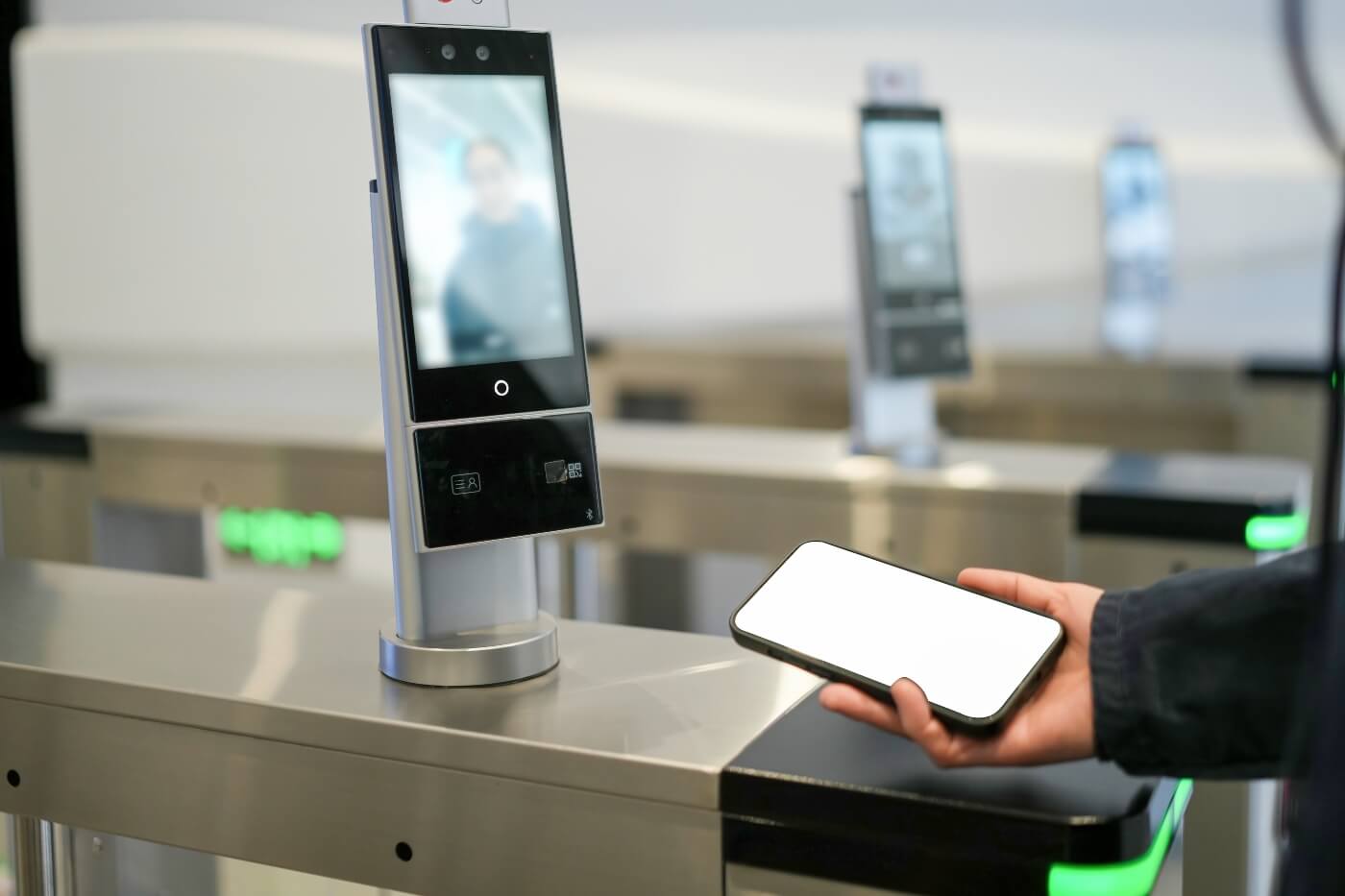
Connecting access control with video cameras and alarm systems makes your security much stronger. When these systems work together, you can see who is entering, respond faster to problems, and keep clear records. Here is a simple way to integrate them:
Step 1: Check Your Current Systems
First, look at your existing access control, cameras, and alarms. Make sure they can work together. Knowing this ahead of time will make the setup easier and prevent problems later.
Step 2: Link Cameras To Access Points
Attach cameras to doors, gates, or other entry points. Each time someone uses a card, fingerprint, or phone credential, the camera records the event. This provides proof of who entered and helps identify suspicious activity.
Step 3: Set Up Alarms For Important Events
Program alarms to alert you when something unusual happens, such as a door being forced open or someone trying to access a restricted area. When the alarm sounds, the system can also start recording video automatically.
Step 4: Use A Central Control System
Bring all logs, video feeds, and alarms into one platform. This makes it easier for security staff to see everything in one place and respond quickly if there is a problem.
Step 5: Test Everything
Before using the system fully, test each door and camera. Check that alarms trigger correctly and that video records events properly. Adjust settings until everything works reliably.
By following these steps, your access control, video, and alarm systems will work as one. This setup makes your site safer and gives your team the tools to act quickly if there is an incident.
How Cybersecurity and Identity Controls Keep Your Access System Safe
Access control systems are not just about doors and badges. They also need strong cybersecurity to protect credentials, prevent unauthorized access, and keep your system running smoothly.
Here’s how modern security practices make your system safer.
Role-Based Access And Policy-Driven Rules
Role-based access lets you assign permissions based on a person’s job or responsibility. For example, only managers can access server rooms, while cleaning staff can enter maintenance areas. Policy-driven rules add another layer by controlling access based on time, location, or specific events. This way, users only see what they need and nothing more. These controls reduce the chance of mistakes or misuse and make your site safer without slowing down daily operations.
Encryption Of Credentials And Secure Firmware
Encryption protects the data your system relies on, such as PIN codes, card numbers, or biometric templates. Even if someone intercepts this information, encryption keeps it unreadable. Secure firmware ensures that the devices controlling doors and readers cannot be tampered with. Regular updates to firmware fix vulnerabilities and add new protections. Together, these measures safeguard your access control system from digital threats.
Two-Factor And Context-Aware Access Decisions
Two-factor authentication adds a second verification step, like a temporary code or mobile approval, making it harder for unauthorized users to gain entry. Context-aware access looks at additional factors such as location, time, or device before granting access. For instance, a badge swipe outside working hours may trigger an alert or require extra verification. These practices prevent breaches while keeping access smooth for legitimate users.
Best Practices For Network Segmentation And Device Posture
Separating your access control system from other networks limits exposure if one part is compromised. This is called network segmentation. Device posture checks ensure that only approved and updated devices can connect to the system. Combining these strategies minimizes risk, maintains system reliability, and supports ongoing security monitoring.
How to Pick Durable and Future-Proof Access Control Hardware
Selecting the right access control hardware is essential to keep your site secure now and in the future. Durable, scalable devices handle daily use, withstand environmental challenges, and allow your system to grow without frequent replacements.
Here’s what to look for when choosing hardware.
Power Backup, Battery and Fail-Safe Design
Reliable access control depends on continuous operation, even during power interruptions. Look for systems that offer:
- Battery backup to keep doors functioning during outages
- Fail-safe designs that unlock doors safely in emergencies
- Automatic notifications to security staff when power or battery issues occur
- Quick switchovers to ensure minimal downtime
These features help maintain security and safety without relying solely on the main power supply.
Tamper Resistance and Maintenance Needs
Hardware should be strong enough to resist tampering and built for easy upkeep. Key points to consider include:
- Reinforced housings to prevent forced entry
- Secure mounts that deter unauthorized removal
- Lockable enclosures for added protection
- Components that are easy to clean, replace, or upgrade
This ensures your system stays reliable while reducing maintenance headaches.
Weather-Rated Readers for Outdoor Doors
Outdoor doors face rain, heat, cold, and dust. To prevent malfunctions, choose hardware that is weather-rated and durable:
- Devices designed to withstand temperature extremes
- Protection against dust, moisture, and UV exposure
- Consistent performance year-round without corrosion
- Long-lasting functionality even in harsh environments
Weather-proof readers save money on replacements and improve long-term reliability.
Support, Warranty, and Lifecycle Planning
Your investment is only secure if you have proper vendor support and upgrade options. Look for:
- Clear warranty terms covering defects and performance issues
- Responsive customer service for troubleshooting and maintenance
- Upgradeable hardware that can integrate new technologies
- Planning for expansion to more doors or sites without replacing the system
A strong support and lifecycle plan ensures your access control system remains effective and scalable.
8 Common Myths About Access Control Systems You Should Know
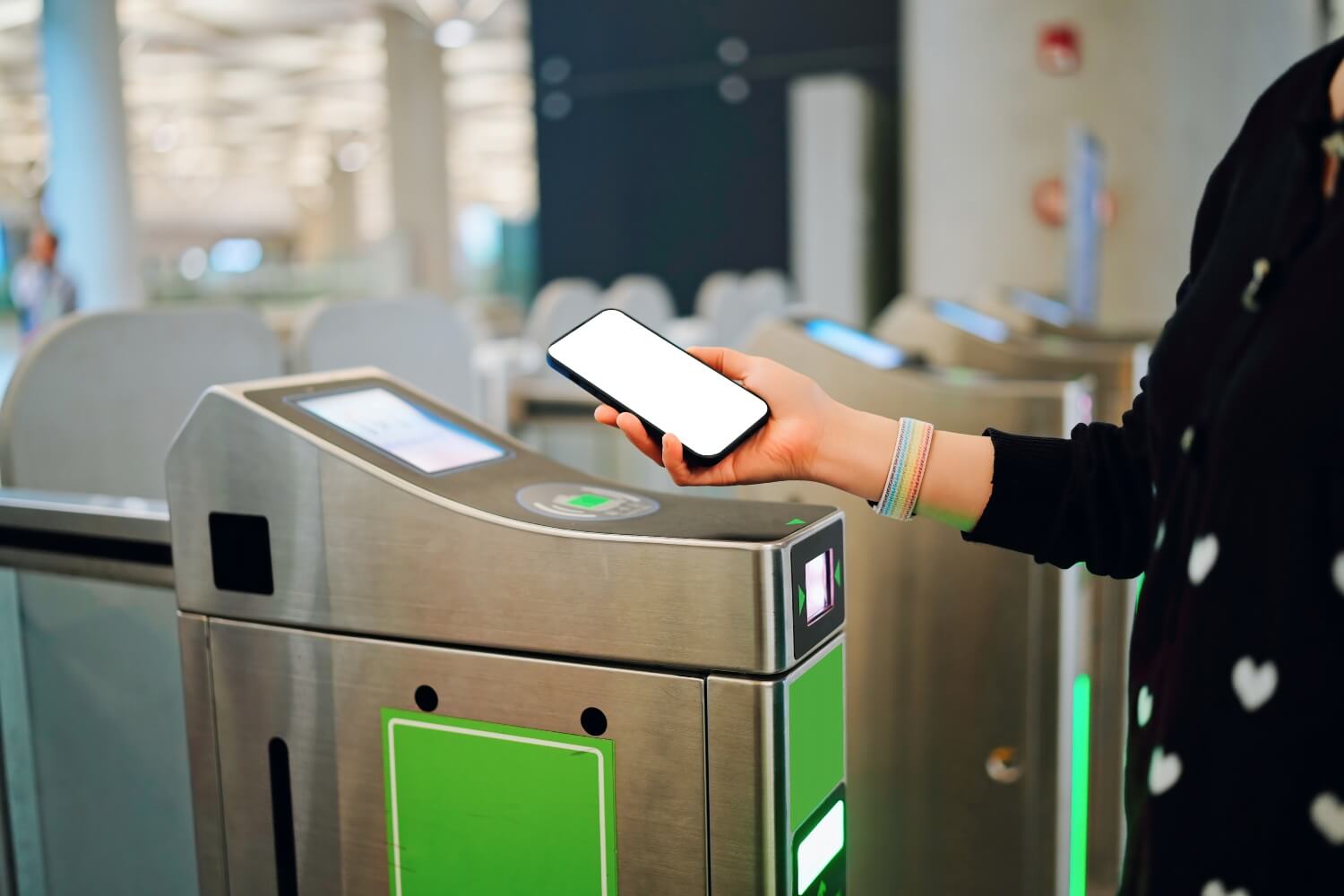
Access control systems are essential for securing your premises, but several myths can lead to confusion. Knowing the truth behind these misconceptions helps you make better decisions and get the most out of your system.
-
Access control is just about passwords and usernames
Modern systems use multifactor authentication, biometric scans, and context-based rules to strengthen security beyond simple login credentials.
-
Access control systems are only for large organizations
These solutions are scalable and can fit small businesses, schools, and residential properties, offering strong security without complexity.
-
Mobile access is less secure than traditional methods
Encrypted communication and secure digital keys make mobile access both convenient and highly secure, often more than physical cards.
-
Cloud-based systems are not as secure as on-premises solutions
Many cloud providers offer advanced security, regular updates, and expert management, which can make them even safer than on-site systems.
-
Access control systems are difficult to integrate with other security systems
Modern solutions can integrate seamlessly with video surveillance, alarms, and other security technologies for a complete safety network.
-
Once installed, access control systems do not require regular updates
Regular updates and maintenance are essential to address vulnerabilities and keep up with evolving security threats.
-
All access control systems are equally effective
Effectiveness depends on the technology, implementation, and integration with other security measures. A tailored approach is always best.
-
Access control systems are too expensive for small-scale applications
Cost-effective options exist that provide robust protection without exceeding budgets.
Frequently Asked Questions
How does access control improve security?
Access control improves security by limiting who can enter specific areas and tracking all activity. It prevents unauthorized access, reduces risks of theft or damage, and provides detailed logs for monitoring and investigations.
How does the access control system help to secure the building?
An access control system secures a building by managing entry points with credentials like cards, biometrics, or mobile devices. It creates secure zones, monitors activity in real time, and alerts staff to unusual or unauthorized access.
How can access control lists be used to improve network security?
Access control lists (ACLs) manage who can access digital resources on a network. By granting permissions based on roles, devices, or IP addresses, ACLs prevent unauthorized users from accessing sensitive information and reduce cyber risks.
What are the benefits of an access control system?
Access control systems offer improved safety, operational efficiency, and compliance. Benefits include preventing unauthorized entry, creating audit trails, integrating with alarms and cameras, and scaling easily as security needs grow.
How can I measure ROI and results from access control systems?
Track key metrics like reduced incidents, faster investigations, and staff hours saved. Use before-and-after examples to show improvements and present clear data to stakeholders to demonstrate cost savings and enhanced site security.
Strengthen Your Site Security with the Right Access Control System
Access control systems are more than just a way to lock doors; they are a key part of keeping your site safe, monitoring activity, and protecting people and assets. From reducing unauthorized access to providing detailed logs for investigations, a well-planned system brings peace of mind and operational efficiency. By understanding the types, benefits, and best practices, you can choose a solution that fits your site’s needs and grows with your organization.
At Pioneer Security, we know that every property has unique security challenges. That’s why we provide access control systems that are reliable, easy to manage, and customized to your site. Our team works with you to assess your property, recommend the right technology, and support you from installation through ongoing management.
If you’re ready to enhance your site’s security and simplify how you manage access, contact Pioneer Security today and let us help you create a safer, more innovative environment.

